US homeland missile defense: Room for expanded roles
Introduction
US adversaries’ missile-based threats, including ballistic, cruise, hypersonic, and novel combinations of these types, are growing in size and sophistication. The coercive military strategies of China, Russia, and North Korea rely heavily on missiles that can range the US homeland; as threats against the US homeland grow, so does the danger to US vital interests. How then should US defense strategy adapt to this new reality? Deterrence will of course play its leading policy role, as the continuing bipartisan consensus behind modernizing US nuclear weapons and conventional forces demonstrates.1See, for instance, Madelyn R. Creedon and Jon L. Kyl, chair and vice chair, America’s Strategic Posture: The Final Report of the Congressional Commission on the Strategic Posture of the United States, Institute for Defense Analyses, October 2023, https://armedservices.house.gov/sites/republicans.armedservices.house.gov/files/Strategic-Posture-Committee-Report-Final.pdf. Given the severity and the immediacy of missile threats to the US homeland, however, US policymakers should reexamine the complementary roles that expanded and improved homeland missile defenses could play in supporting deterrence and the US defense strategy more broadly.
Indeed, there are three distinct developments in adversary threats that should drive further analysis on the role of US homeland-based missile defenses: the growing North Korean intercontinental ballistic missile (ICBM) arsenal, the expanding Chinese and Russian coercive missile strike options against the US homeland, and the potentially declining ability of the US nuclear arsenal to survive a first strike and accomplish objectives in the emerging two-nuclear-peer threat environment.2By “coercive,” this issue brief refers to strikes that are restricted in size and targets to achieve political and military advantages and affect US decision-making, but without prompting a response that they deem too costly. The Strategic Posture Commission offers a similar definition in its report, stating, “A ‘coercive’ attack consists of limited conventional or nuclear strikes intended to convince U.S. leadership that the costs of intervening or persevering in a conflict involving the attacker are too high. . . . Such coercive attacks are bounded in scale to avoid eliciting a severe U.S. response. The coercive effect of the attack is based on the threat that additional attacks will follow if the United States refuses to be coerced.” Creedon and Kyl, America’s Strategic Posture, 66. Each of these developments will challenge US deterrence and assurance efforts in unique and complicated ways, requiring US responses across the range of the tools of state power.
This issue brief focuses on one set of capabilities in particular that is ripe for reassessment given its potentially significant contributions to national US defense strategy: US homeland missile defenses. The narrow topical focus allows a deeper examination of the issues at play but should not be construed as an endorsement of US homeland missile defenses as a “silver bullet” for all defense problems or as a substitute for other ongoing programs. Rather, US homeland missile defenses can and should expand in numbers, capability, and role in the broader US defense strategy, potentially to great deterrent effect, without forever chasing the prospect of an “impenetrable shield” over the entire homeland. The choice, in short, is between retaining the primarily retaliatory-based nature of current US deterrence strategy or adding a significant element of defenses to complement and strengthen the credibility of retaliatory threats.3This is a restatement of the choice posed by Reagan-era official Fred S. Hoffman in his “Imperfect Strategies, Near-Perfect Defenses, and the SDI,” in Swords and Shields: NATO, the USSR, and New Choices for Long-Range Offense and Defense, eds. Fred S. Hoffman, Albert Wohlstetter, and David S. Yost (Lexington, MA: Lexington Books, 1987), 205.
To examine these topics, this issue brief proceeds in six parts, first by providing a short overview of post-Cold War US homeland missile defense policy and the current debate. Second, this paper examines the role that US homeland missile defense can play in countering the North Korean ICBM threat, specifically within the US policy of “staying ahead” of the threat. Third, this paper assesses whether the role of US homeland missile defense should be expanded to include deterring and defeating coercive Chinese and Russian missile strikes. Fourth, this paper considers what supporting roles US homeland missile defense could play in strengthening the survivability of US nuclear forces in a two-peer nuclear threat environment. Fifth, this paper addresses some of the anticipated criticisms of expanding the roles and capabilities of US homeland missile defense. Sixth and finally, the paper concludes with a set of recommendations for US policymakers that, if implemented, could strengthen deterrence of missile-based attack against the US homeland and provide critical support for the US national defense strategy.
Post-Cold War US homeland missile defense: The policy debate
With the collapse of the Soviet Union, the priority of US missile defense focused on emerging threats to the homeland posed by unpredictable regional actors, i.e., “rogue” powers such as North Korea. The foundation of post-Cold War US missile defense policy is anchored in the 1999 National Missile Defense (NMD) Act, which established a national policy to “deploy as soon as is technologically possible an effective national missile defense system capable of defending the territory of the United States against limited ballistic missile attack, whether accidental, unauthorized, or deliberate.”4National Missile Defense Act of 1999, Pub. L. No: 106-38, 113 Stat. 205 (1999). Initially, the Clinton administration sought to build US homeland missile defenses within the confines of the 1972 Anti-Ballistic Missile (ABM) Treaty, but the Bush administration viewed the treaty as anachronistic, given improved relations with Russia, and potentially too restrictive for allowing the types of capabilities needed to defeat the emerging rogue-state threat.
Since the US withdrawal from the ABM Treaty in 2002, the United States has pursued a restrained homeland missile defense strategy scoped to countering rogue states and accidental launches from great powers, eschewing the kind of whole-of-nation defense contemplated in President Ronald Reagan’s 1983 Strategic Defense Initiative (SDI). In 2002, President George W. Bush directed the US Department of Defense (DOD) to field initial homeland missile defense capabilities, supported by various sensors, by 2004-05. For the homeland, this took the form of the ground-based midcourse defense (GMD) system, incorporating ground-based interceptors (GBIs) deployed in Alaska and California. The scope of these deployment decisions—an initial force of forty-four GBIs—made clear the focus was on limited ICBM attacks to address the new rogue-state threats.
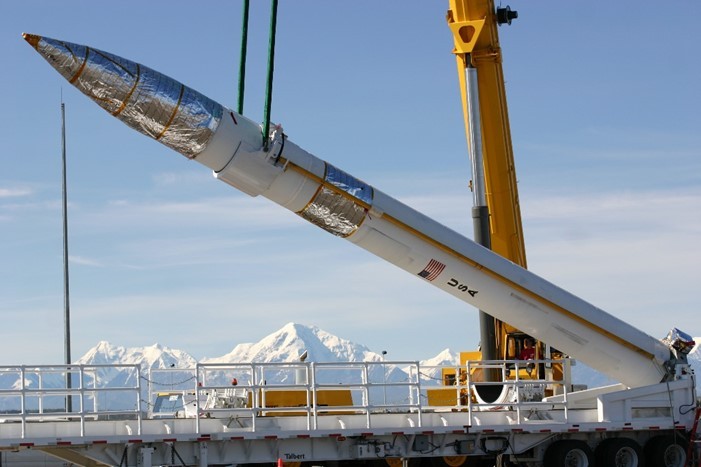
The Obama administration ultimately decided to retain and upgrade the forty-four GBIs, while the Trump administration continued upgrades and life-extension programs to these interceptors, also endorsing an increase of the total number of interceptors to sixty-four. The twenty additional interceptors will be part of the Next Generation Interceptor (NGI) program: the first fully new homeland missile defense interceptor in over twenty years. With respect to Russia and China, the Obama, Trump, and Biden administrations have all stated that the United States continues to rely on its nuclear forces, not its homeland-based missile defenses, to deter nuclear threats against the homeland.
Today, however, the confluence of the three major threat scenarios described below has reawakened a long-dormant debate about the proper role of homeland missile defenses in the broader US defense strategy. While this debate has long included discussions about technical feasibility, cost effectiveness, and other operational considerations, the primary focus has been on policy. Thus, this issue brief concentrates on the main divide in homeland missile defense policy, which is between two main camps: those who view improved capabilities as likely to spur an offensive-defensive arms race, thus harming US deterrence efforts, and those who view improved capabilities as strengthening US deterrence efforts by complicating adversary attack plans, especially smaller-scale attacks. Although this divide is not inherently partisan, recent dueling statements among Armed Services Committee members in the US House of Representatives on the future of US missile defense policy illustrate that there is an element of political opposition or support depending on party lines.5For instance, Rep. Seth Moulton, the top Democrat on the House Armed Services Subcommittee on Strategic Forces and a former Marine Corps captain, is wary of expanding US defenses against North Korea: “If we continue to expand our current arsenal of interceptors, we must ask not just how North Korea will respond, but how Russia and the [Chinese Communist Party] will respond as they see a pathway for our missile shield to impact their deterrent as well . . . at what point will this arms race provoke a response from Russia and the CCP?,” Moulton said in his opening statement, Hearing on Missile Defense Policy and Programs for Fiscal Year 2024 Before the House Subcomm. on Strategic Forces (April 19, 2023). House Armed Services Republicans, according to the committee’s official X account (Armed Services GOP@HASCRepublicans), by contrast, consider the current missile defense architecture inadequate to address the growing missile threat to the homeland, tweeting (before the platform became X), that “it needs to be the missile defense policy of the US to outpace the [Democratic People’s Republic of Korea] threat to the homeland. It’s clear that 44 Ground Based Interceptors are not enough. We need to accelerate Next Generation Interceptors and begin moving to space based defenses,” February 14, 2023, https://twitter.com/HASCRepublicans/status/1625555014411329536.
How can US homeland missile defense contribute to defense strategy?
To clarify the policy choices available to decision-makers, this issue brief examines what roles an expanded and improved US homeland missile defense system could play as a complement to other capabilities, such as modernized US conventional and nuclear forces. In brief, a US deterrent threat is likely to be more effective if it combines the threat of an overwhelming response (i.e., cost imposition) as well as the threat of preventing the adversary from achieving its objectives (i.e., denial). Currently, the US defense strategy relies almost exclusively on the former for deterring Russian and Chinese missile threats against the homeland, even limited or coercive attacks. A major concern in following this strategy is that allowing Russia and China a “free ride” to the US homeland may promote their belief they can successfully coerce US leaders and the population through missile strikes—shocking US leadership into submission, encouraging the fear of escalation, and deterring an overwhelming response by threatening further attacks.
Deterrence by denial through expanded and improved US homeland missile defenses, however, could be an important factor in presenting China’s, Russia’s, and North Korea’s attack planners with the prospect of the worst of both worlds: their attack failing in its objectives and provoking an unacceptable US response. US leaders are more likely, and may be seen by adversaries as more likely, to respond to an attack with overwhelming force when there is the meaningful prospect of limiting the risk of escalation and damage levels. In short, US officials are more likely to deter an attack in the first place if adversaries perceive too much risk or too little likelihood of success in escalating a conflict to the US homeland. US homeland missile defenses, therefore, can act as deterrent threats in and of themselves, but their true value lies in how they can also add more credibility to the full range of US deterrence threats, before and during a conflict.
Approaching this topic with reference to the credibility of US threats, US homeland missile defenses are unique from conventional or nuclear weapons in that the likelihood a president would employ them during an attack is about 100 percent.6A point made by Keith B. Payne and Colin S. Gray, “Nuclear Policy and the Defensive Transition,” Foreign Affairs 62, no. 4 (1984): 829. An adversary has no reason to doubt the United States would try to defend itself, whereas an adversary may successfully convince himself there is some chance the United States would not employ nuclear weapons or conduct a large conventional campaign for fear of escalation. But US missile defenses are not only valuable in deterring or defending against an initial attack, they also can enable a wider array of response options to the attack. Having improved and expanded US homeland missile defenses will likely help a president believe—and be seen by the adversary as believing—that the United States has response options beyond “surrender or suicide.” If an adversary believes that the United States has, or likely has, response options that would be advantageous for the United States to employ, then the adversary may be less likely to initiate an attack in the first place.
This issue brief now considers how to apply these concepts to both the rogue state and peer nuclear threats.
Staying ahead of North Korea
North Korea recently paraded what appeared to be nearly a dozen ICBMs, potentially capable of carrying multiple warheads on each. Concurrently, Gen. Glen D. VanHerck, commander of US Northern Command (NORTHCOM), stated that North Korean advances cause him to be “concerned about [the] future capacity and capability” of the GMD system for homeland defense.7Hearing to Receive Testimony on the Posture of United States Northern Command and United States Southern Command in Review of the Defense Authorization Request for Fiscal Year 2024 and the Future Years Defense Program Before the Senate Armed Services Comm., 117th Cong. (2023) (statement of Glen D. VanHerck, commander, United States Northern Command and North American Aerospace Defense Command), 6, https://www.armed-services.senate.gov/imo/media/doc/NNC_FY23%20Posture%20Statement%2023%20March%20SASC%20FINAL.pdf. Given the limited number of current GBIs available, and with the more capable NGI not expected to arrive until 2028, there may be a shortfall in the mid-to-late 2020s in the US ability to intercept a full-scale North Korean attack on the homeland.
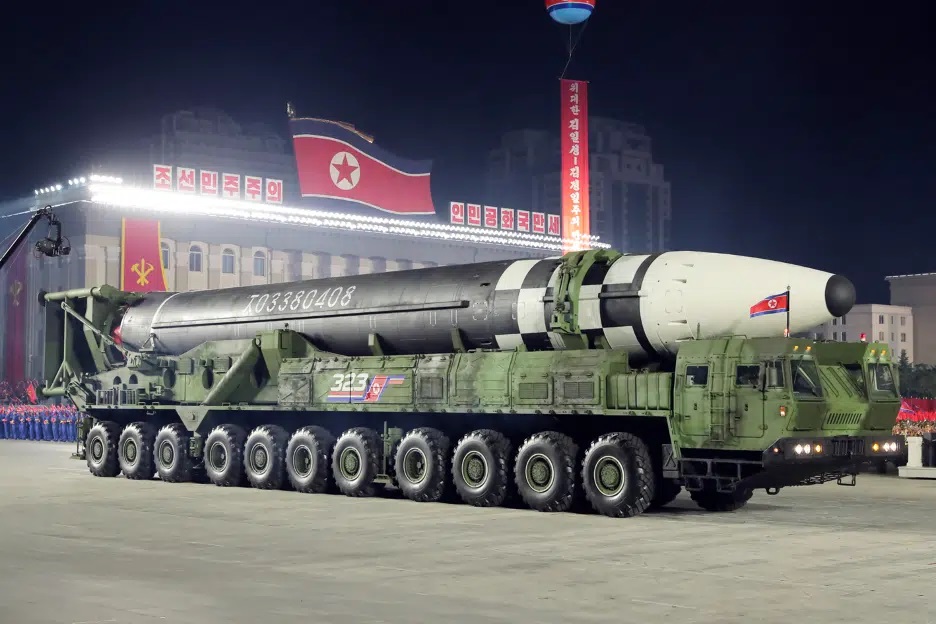
Current US policy, as stated in the “2022 Missile Defense Review,” is to “stay ahead” of the North Korean threat through improved homeland missile defenses and “missile defeat,” that is, capabilities that can potentially disable or destroy North Korean ICBMs before they are launched.“82022 Missile Defense Review,” included in 2022 National Defense Strategy, US Department of Defense, October 27, 2022, 63-80, https://media.defense.gov/2022/Oct/27/2003103845/-1/-1/1/2022-NATIONAL-DEFENSE-STRATEGY-NPR-MDR.PDF. Relying on “missile defeat” capabilities to make up for a potential shortfall in kinetic interceptors during the late 2020s, however, comes with its own set of costs and tradeoffs. Employing these capabilities might require advanced warning of an impending attack or even a presidential decision to employ these weapons preemptively based on intelligence of what appears to be an impending attack. Additionally, some “missile defeat” capabilities appear to still be in the research and development stage, meaning their availability for a late 2020s scenario is questionable at best.9Thersea Hitchens, “Beyond Bullet-on-Bullet: NORTHCOM’s New Defense Plan Looks to Kill Missiles Before They Launch,” Breaking Defense, August 9, 2023, https://breakingdefense.com/2023/08/beyond-bullet-on-bullet-northcoms-new-defense-plan-looks-to-kill-missiles-before-they-launch/.
There also is a school of thought that judges that the United States can rely on nuclear deterrence against North Korea, and that trying to stay ahead of the North Korean threat via missile defense and defeat is unaffordable or cost prohibitive—and will upset strategic stability with Russia and China.10Rep. Seth Moulton raised this concern at the April 19, 2023, House Armed Services Comm. Hearing on the president’s budget request for FY 2024 missile defense activities. See also, Jaganath Sankaran and Steve Fetter, “Defending the United States: Revisiting National Missile Defense against North Korea,” International Security 46, no. 3 (2022). This policy choice also comes with significant downsides, such as relying on offensive strikes to limit damage to the US homeland should North Korea decide to attack. Crises with North Korea might also become less stable from the US perspective, since the only chance of avoiding damage to the homeland would be a risky reliance on preemption at the first signs of imminent attack—signs that might be difficult to distinguish from North Korean posturing during a crisis.
Instead, the United States should retain the policy of “staying ahead” of the North Korean ICBM threat, but work to ensure that threat can be neutralized with the properly sized force of kinetic interceptors—at least for the near future, through the beginning of the 2030s. “Missile defeat” capabilities may prove to be useful complements to kinetic interceptors and, should capabilities like directed energy continue to improve, they may even largely replace kinetic interceptors in the future; however, for the near-to-midterm, the focus should be on improving the performance of programs like the Next Generation Interceptor. NGI is currently projected to begin emplacement at the end of 2028; since it will feature multiple kill vehicles atop each interceptor, it could greatly reduce the number of interceptors required to successfully destroy each threat.11Hearing to Receive Testimony on the Department of Defense Missile Defense Activities in Review of the Defense Authorization Request for Fiscal Year 2024 and the Future Years Defense Program Before the Senate Armed Services Comm., 117th Cong. (2023) (statement of Jon A. Hill, director, Missile Defense Agency), 12, https://www.armed-services.senate.gov/imo/media/doc/23-46_05-09-2023.pdf.
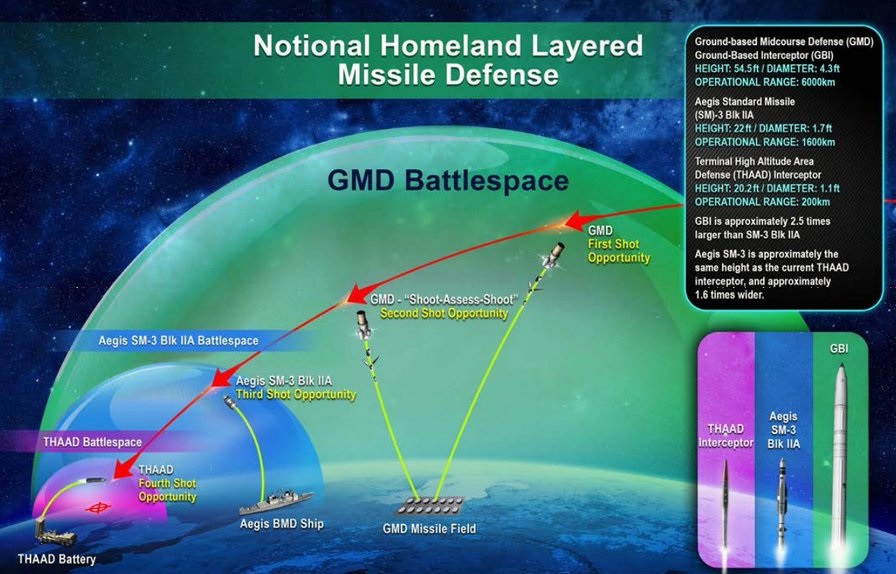
Additionally, the United States may have the option of supplementing the GMD system by developing an “underlayer” of Standard Missile (SM)-3 Block IIA interceptors based at sea or on land.12For additional explanation of “layering” defenses, see “Layered Homeland Missile Defense,” US Department of Defense, June 2020, https://media.defense.gov/2020/Jun/22/2002319425/-1/-1/1/LAYERED-HOMELAND-MISSILE-DEFENSE-FINAL.pdf. In November 2020, the United States successfully tested the SM-3 IIA against an ICBM-type target, even though the SM-3 was originally developed to intercept intermediate-range threats—demonstrating at least the latent capability to potentially help defend the US homeland from missile cruisers and destroyers that could be surged in a time of crisis with North Korea.13“U.S. Successfully Conducts SM-3 Block IIA Intercept Test Against an Intercontinental Ballistic Missile Target,” US Department of Defense news release, November 17, 2020, https://www.defense.gov/News/Releases/Release/Article/2417334/us-successfully-conducts-sm-3-block-iia-intercept-test-against-an-intercontinen/.
Failing to follow through on NGI and a potential “underlayer” of missile defenses may not only damage deterrence, but also assurance of US allies. As the “2022 Missile Defense Review” explained: “Homeland missile defense systems, such as the GMD, offer a visible measure of protection for the US population while reassuring allies and partners that the United States will not be coerced by threats to the homeland from states like the DPRK and potentially Iran.”14“2022 Missile Defense Review,” 6. The authors concur with the view that a United States unwilling to protect itself against North Korea may be perceived by allies as unwilling to take risks on their behalf. Likewise, the deployment of strategic defenses for the US homeland should help reinforce the North Korean perception that the United States is tightly coupled to the defense of its South Korean and Japanese allies—thereby enhancing deterrence. In a very real sense, reducing the vulnerability of the United States to ballistic missile attack is an essential enabler of a US grand strategy that explicitly relies on allies. If the United States is unwilling to defend itself against ballistic missile threats, why should allies believe it would be willing to run risks on their behalf?
Countering coercive attacks from China and Russia
Even as the United States adapts to the dynamic North Korean ICBM threat, China and Russia are building the missile-based forces necessary to threaten the US homeland at or below the nuclear threshold to enable their strategies of coercion and theories of military victory. Since the United States has eschewed developing homeland missile defenses of any kind designed to defeat Chinese or Russian missile threats (except for a limited cruise missile defense of the national capital region), China and Russia appear to view this perceived vulnerability as an opportunity to successfully deter, coerce, or ultimately defeat US efforts to project power overseas.
According to some US experts, “Moscow and Beijing appear now to calculate that their respective threats to escalate to limited nuclear war will be sufficient to paralyze direct US opposition to their regional expansionism.”15Keith B. Payne, Deterrence via Mutual Vulnerability? Why Not Now? (Fairfax, VA: National Institute for Public Policy, October 19, 2022), 4, https://nipp.org/wp-content/uploads/2022/10/Info-Series-536.pdf. This may include dual-use capabilities to attack the foundation of the US national defense strategy: power projection from the homeland. The “2022 Nuclear Posture Review” recognizes this problem, stating that the United States must prepare to deter large-scale and limited nuclear use from its nuclear-armed adversaries, especially in light of the increasing reliance on the coercive threat of limited nuclear use in these states’ strategies.“162022 Nuclear Posture Review,” US Department of Defense, 7. More recently, Lt. Gen. Gregory Guillot, nominated to be the new commander of US Northern Command, told Congress in July that the Defense Department should consider expanding current national missile defense policy to also counter coercive attacks on the United States by China or Russia.17Jason Sherman, “Northcom Nominee: U.S. Should Consider Means to Defeat Limited Russia, China ICBM Attack,” Inside Defense, July 26, 2023, https://insidedefense.com/daily-news/northcom-nominee-us-should-consider-means-defeat-limited-russia-china-icbm-attack. There appears to be growing support for this approach, as the bipartisan US Strategic Posture Commission reached consensus recently and recommended that the “United States should develop and field homeland [integrated air and missile defense] capabilities that can deter and defeat coercive attacks by Russia and China.”18Creedon and Kyl, America’s Strategic Posture, 72.
Deterring coercive nuclear strikes or conventional strikes with strategic effects against the homeland requires a combination of appropriate conventional forces, nuclear forces, and missile defenses. The missile defense review (MDR) of 2022 notes that regional missile defenses can help the United States deter or defend against limited nuclear use by effectively making the risks and potential costs of smaller-scale nuclear coercion appear unacceptable; there is no reason this concept cannot also extend to the defense of the homeland.“192022 Missile Defense Review,” 6. While China or Russia could, in theory, simply overwhelm a US homeland missile defense system designed to defend against coercive attacks, the larger the attack size needed to overcome US defenses, the more China or Russia run the risk that the United States perceives the motivations behind the attack as unlimited and responds accordingly. Additionally, the larger the attack size needed to overcome US homeland missile defenses, the better the chance the United States could detect attack preparations and take the appropriate measures to improve its defense posture.
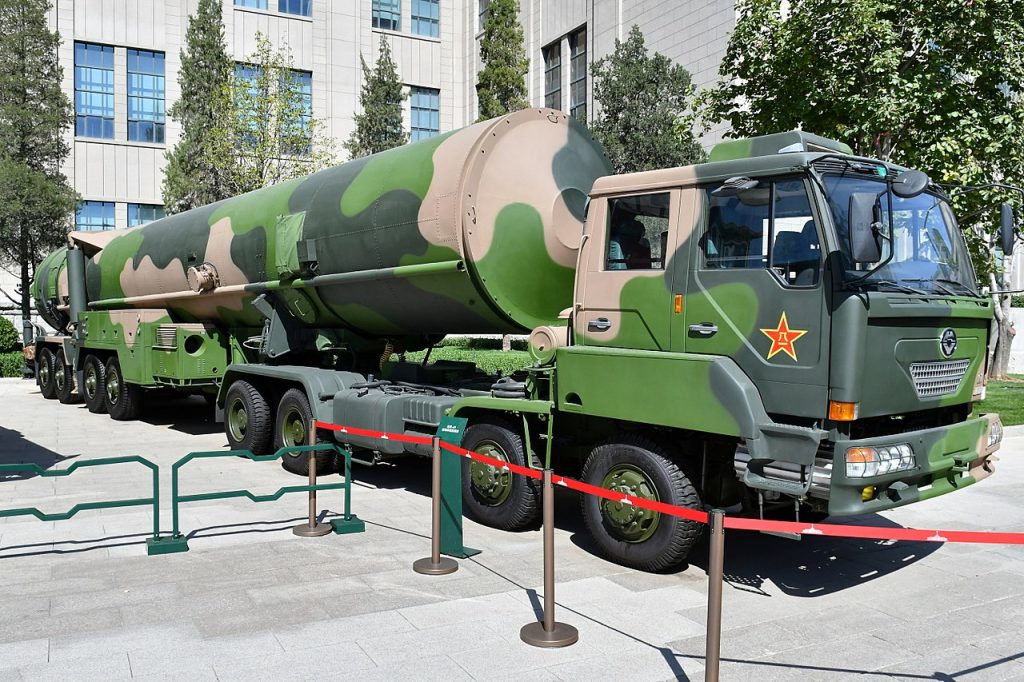
Source: Wikimedia user Tyg728.
Given the sheer variety of Chinese and Russia missile delivery systems (cruise, ballistic, hypersonic glide vehicles, fractional orbital systems, and other potential combinations), the question naturally is: what kind of US homeland missile defenses are most needed to deter and defeat coercive threats? If one of the US objectives is to be able to intercept a handful of Chinese or Russian ballistic missiles, then the current homeland defense architecture could potentially be sufficient if it is upgraded to address their more sophisticated reentry vehicles armed with decoys and countermeasures. To address these countermeasures, the Department of Defense must improve the tracking and discriminating of warheads, likely from space. If the GBI/NGI can sense Russian and Chinese reentry vehicles and distinguish them from decoys, with the help of space-based sensors, then it may have a reasonably good chance to complete the intercept, even against these more sophisticated targets.
An additional defensive layer provided by the SM-3 IIA missile (deployed on land or at sea) would increase the probability of intercept against rogue-state ballistic missile threats, depending on where such defensive systems were deployed. The SM-3 IIA interceptor has a significantly smaller defensive “footprint” than the GBI (which can defend the entire United States from the sites located in Alaska and California), so multiple sites would be required to provide a nationwide underlayer. The 2019 MDR also suggested that the Terminal High Altitude Area Defense (THAAD) system could play a role as a terminal defense against certain ICBM threats, but this has not yet been tested.
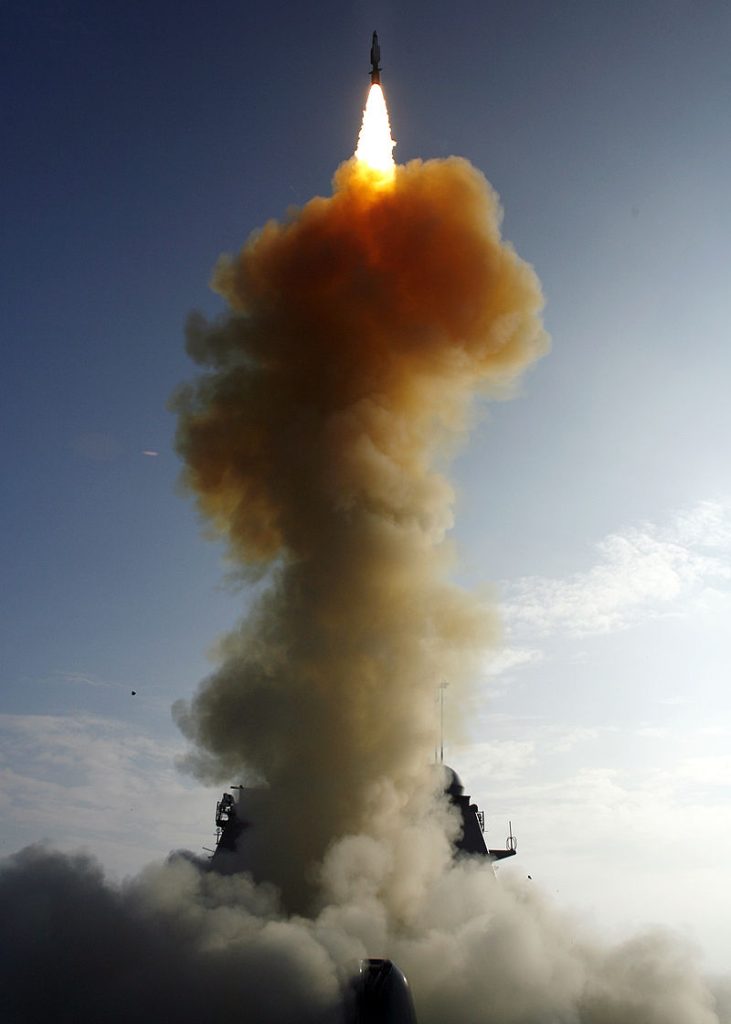
One potential advantage of an underlayer including SM-3 IIAs and perhaps modified THAADs would be imposing costs and uncertainty on Chinese and Russian attack planners, since the countermeasures required to defeat missile intercept attempts in space will be different from those required to counter missile intercept attempts on reentry into the atmosphere.20For example, countermeasures and decoys take up throw weight and volume on a missile, possibly reducing the number of warheads or limiting range. The difference between appropriate countermeasures for endo- and exoatmospheric defense was noted early on in the Strategic Defense Initiative rollout. See Hoffman, “Imperfect Strategies, Near-Perfect Defenses, and the SDI,” 208. The defense against smaller-scale Chinese and Russian threats could be an outgrowth of enhancements to the GMD system (in numbers and capability), taken to stay ahead of the North Korean threat. In other words, growing US capabilities against North Korea could provide some benefit against coercive Chinese or Russian threats.
In addition to ballistic missile strikes against the homeland, China or Russia might employ cruise missiles to coerce the United States at or below the nuclear threshold. The 2022 National Defense Strategy fact sheet states: “Recognizing growing kinetic and non-kinetic threats to the United States’ homeland from our strategic competitors, the Department will take necessary actions to increase resilience—our ability to withstand, fight through, and recover quickly from disruption.”212022 National Defense Strategy, 8. Among these “growing kinetic threats” are China’s and Russia’s pursuit of advanced long-range cruise missiles for targeting critical infrastructure the United States uses to project power in support of its national interests and allies.22Hearing to Receive Testimony on the Posture of United States Northern Command (statement of VanHerck). The US government has long recognized that adversaries will seek to defeat the US theory of victory by threatening the means of projecting power overseas in an attempt to diminish political will and delay the use of overwhelming force against their regional aggression.23For a prescient report that covers this topic, see Joint Chiefs of Staff, Joint Operating Environment 2035, July 14, 2016, 24-27, https://www.jcs.mil/Portals/36/Documents/Doctrine/concepts/joe_2035_july16.pdf.
For example, US officials have warned about China and Russia planning to conduct offensive strikes against the US homeland below the threshold of nuclear weapons use. These attacks may be limited in number and focus on the kind of targets that would avoid provoking too costly a US response—yet be significant enough in effect to potentially cause US officials to reconsider their support of allies.24Hearing to Receive Testimony on the Posture of United States Northern Command (statement of VanHerck), 5-8. Gen. VanHerck, following the 2022 National Defense Strategy, stated recently that Russia’s long-range conventional cruise missiles are a growing concern and required an improved US ability to detect and track those threats. In support of this, the fiscal year (FY) 2024 budget requests $516 million to procure over-the-horizon radars.25Jason Sherman, “DOD Launches Domestic Cruise Missile Defense Program to protect U.S. Cities, ‘Critical’ Sites,” Inside Defense, September 5, 2023, https://insidedefense.com/share/218957. These new systems would provide situational awareness across domains to identify air and cruise missile threats inbound to the United States. In parallel, as Peppi DeBiaso notes, “DOD has designated the U.S. Air Force as the Executive Agent for homeland [cruise missile defense] to examine, in conjunction with other agencies (e.g., [the US Missile Defense Agency] and the Services), architectures, including sensors, interceptors and command and control (C2) arrangements for CMD of critical military targets within the United States. This analysis is in the early stages and specific architectural options have yet to be defined,” and this analysis is unlikely to be completed before early 2024.26Peppi DeBiaso, “Missile Defense and U.S. Strategic Competitors: An Evolving Approach?,” in Expert Commentary on the 2022 Missile Defense Review, ed. David J. Trachtenberg, National Institute for Public Policy Occasional Paper 3, no. 4 (2023): 33-44, https://www.nipp.org/wp-content/uploads/2023/04/OP-Vol.-3-No.-4.pdf. These developments, if pursued to completion, can help strengthen deterrence by discouraging adversary perceptions that a vulnerable US homeland offers an opportunity for coercion on the cheap, where even small-scale attacks offer a low risk of failure with the greatest potential reward: US capitulation.
The two-nuclear-peer problem
During the Cold War, the United States spent significant time and resources ensuring the survivability of its nuclear forces and command and control capabilities against a potential Soviet nuclear first strike; since the end of the Cold War, the nuclear threat environment has evolved from featuring one major US adversary to two: Russia and China. A combined or nearly sequential Russian and Chinese first strike on the US homeland seems unlikely, given the political and operational obstacles that would challenge such cooperation and trust, yet some sort of major nuclear war with one or both states cannot be fully discounted either.27Center for Global Security Research, China’s Emergence as a Second Nuclear Peer: Implications for US Nuclear Deterrence Strategy, CGSR Study Group Report, Lawrence Livermore National Laboratory, Spring 2023, https://cgsr.llnl.gov/content/assets/docs/CGSR_Two_Peer_230314.pdf. As recognized by nuclear strategists throughout the Cold War, a nuclear force that can survive a first strike and respond against targets that the adversary values most is the foundation for a strategy of deterring that attack in the first place. The task of deterring a nuclear first strike is therefore greatly complicated when, instead of requiring a force to respond against one attacker, the United States will likely require a force to respond against the attacker and deter additional attacks from the other nuclear peer. In such a scenario, the United States might not even correctly be labeled a nuclear “peer” with the remaining adversary—the United States may need to deter major nuclear attack from a position of significant inferiority in weapon numbers.
As China expands its nuclear forces, US officials must consider how to make their nuclear forces survivable in a conflict against two great powers, perhaps at the same time, under any conditions. Preferential missile defenses for US nuclear forces; national leadership; and nuclear command, control, and communications (NC3) could enhance US survivability and contribute to deterrence. Such defenses may or may not provide significant protection for the population (depending on the architecture), but they could enhance deterrence by complicating any potential Russian or Chinese first-strike plans, or opportunistic aggression by one state after the other’s initial attack.28Preferential limited missile defense for US strategic forces was considered during the Cold War. See MX Missile Basing, US Congress, Office of Technology Assessment, September 1981; and Report of the President’s Commission on Strategic Forces, April 1983, 9-10. In short, the objective is to convince Russia and China that no combination of attacks could successfully prevent the United States from retaliating with sufficient nuclear forces to inflict unacceptable damage on them both—thereby contributing to deterrence of preemptive or opportunistic disarming first strikes.
Detailed analysis of the two-nuclear-peer problem facing the United States is just beginning, but early indications from such scholarship evinces a possible role for homeland missile defense. An influential March 2023 paper from the Center for Global Security Research recommends an assessment of “fielding limited cruise and ballistic missile defenses to protect select assets, such as critical NC3 nodes in comparison with other means of enhancing survivability and endurance.”29CGSR, China’s Emergence as a Second Nuclear Peer, 70. Likewise, Gen. VanHerck has said that “[North American Aerospace Defense Command] and USNORTHCOM must be prepared to protect continuity of government, our nuclear infrastructure, power projection capabilities, and key defense nodes.”30Glen D. VanHerck, “Deter in Competition, Deescalate in Crisis, and Defeat in Conflict,” Joint Forces Quarterly 101, 2nd Quarter 2021, https://ndupress.ndu.edu/Portals/68/Documents/jfq/jfq-101/jfq-101.pdf.
The theory behind preferential defense for US retaliatory forces is for commanders to intercept only those warheads that appear to be targeted against US nuclear forces (or other strategic capabilities)—a determination that can be made based on the trajectory of the incoming threats. While technically challenging, such “endoatmospheric” defenses enjoy an important advantage: many decoys or countermeasures associated with the incoming warhead will have burned up in reentry, making the task of discrimination and intercept less complicated.
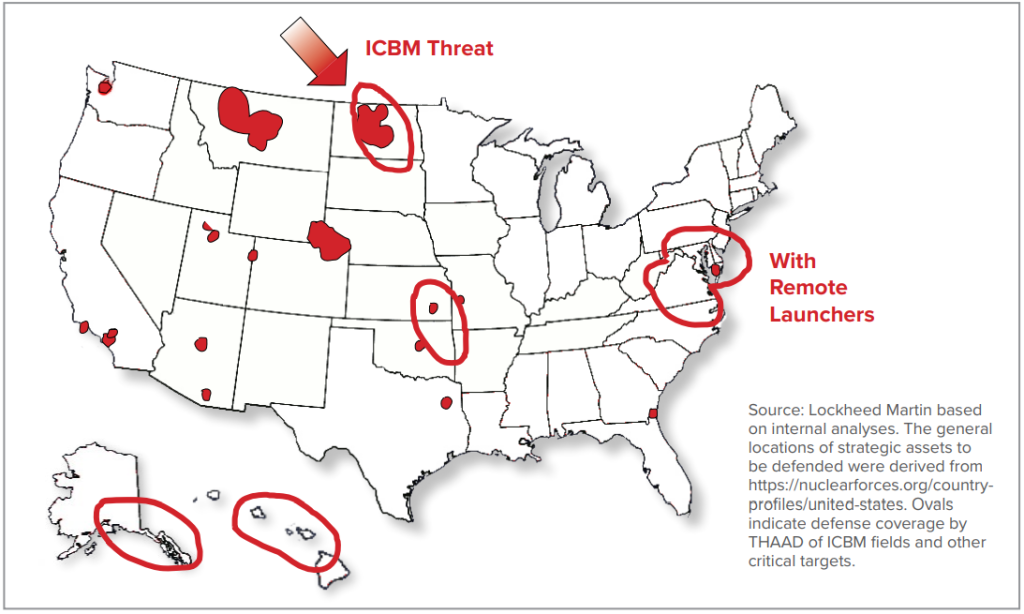
The 2019 MDR and some independent analysis suggests the Army’s THAAD system, with some enhancements, could provide a limited defense of some military assets.31Figure 2 is a notional depiction of THAAD’s defensive footprint against ICBMs, as assessed by Lockheed Martin Company. Vice Admiral Jon Hill had testified that THAAD may have some limited capability against long-range ballistic missiles; see Hearing Before House Armed Services Subcomm. on Strategic Forces (March 2020) (statement of Jon Hill, then-director, Missile Defense Agency), 7, https://www.congress.gov/116/meeting/house/110671/witnesses/HHRG-116-AS29-Wstate-HillJ-20200312.pdf. One analyst described the benefits of preferential defense for US ICBMs, stating:
For example, assume 100 US missile interceptors are deployed to defend the 400 [ground-based strategic deterrent] ICBMs. If an attacker could not know in advance which 100 of the 400 GBSD missiles the interceptors were directed to defend, its problem is further complicated. To have a high confidence of success against the land-based triad leg supplemented by a missile defense shield, the attacker would have to add a third warhead to account for the possibility that an interceptor missile could take out one of the two warheads in the original attack plan. The tradeoff is now 3:1, with 1,200 warheads—roughly 80 percent of the New START limit—required to defeat the GBSD, making such an attack even more unattractive, thereby fortifying deterrence.32Andrew F. Krepinevich Jr., Modernizing the Nuclear Triad: Decline or Renewal? Hudson Institute, October 2021, 23, http://s3.amazonaws.com/media.hudson.org/Krepinevich_Modernizing%20the%20Nuclear%20Triad%20-%20Decline%20or%20Renewal.pdf.
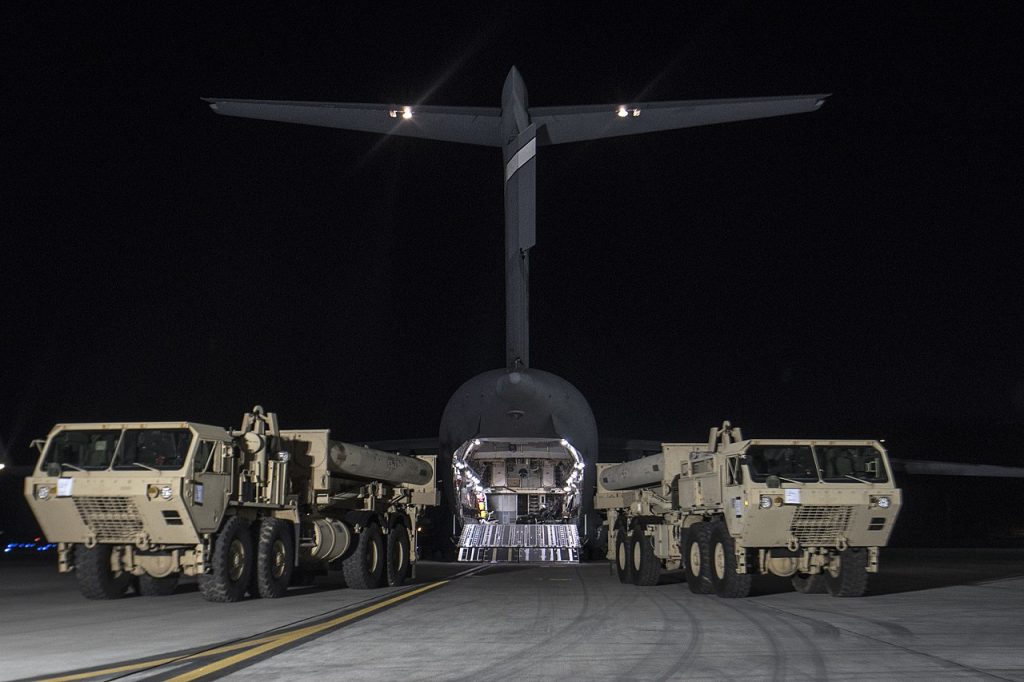
Preferential missile defenses could also play a role in buying time for possible future mobile US land- and sea-based nuclear systems to move out of the area, enhancing survivability and further complicating adversary attack plans.
One often-overlooked point regarding homeland missile defenses is that, depending on their capabilities, they can reduce the need for adding more nuclear warheads to the US arsenal. If a certain number of US nuclear forces must survive a first strike to meet US deterrence requirements, that number can be achieved through changes in the number of nuclear warheads, the prelaunch survivability of those nuclear warheads, or some combination of both. Thus, in the absence of homeland missile defenses for US nuclear forces and NC3, the United States may be forced to rely on an even larger nuclear force than would otherwise be the case to meet survivability requirements.
Addressing counterarguments
There are two main policy counterarguments to improving and expanding US homeland missile defenses, both with long pedigrees extending back to the Cold War and the debate over the ABM Treaty.
Starting an “arms race”
Perhaps the most common response to proposals to improve and expand US homeland missile defenses is that such action would inevitably prompt an adversary reaction in the form of producing greater numbers of offensive missiles to overwhelm the defensive system. According to this line of thought, at best the action-reaction cycle will be a waste of resources for no net gain in security, and, at worst, the action-reaction cycle will continue unchecked and deepen the sense of security loss, leading to an arms race, worsened political relations, and potentially conflict.
While simple to understand as a concept, the offense-defense, action-reaction construct lacks a substantial historical foundation for its claims.33For a scholarly treatment of arms racing, see Matthew Kroenig, The Logic of American Nuclear Strategy: Why Strategic Superiority Matters (New York: Oxford University Press, 2018) 143-158. For instance, the United States continued to improve and expand its homeland missile defenses after withdrawing from the ABM Treaty in 2002, and yet—contrary to the action-reaction hypothesis—Russia did not engage in an arms race with the United States to overcome those defenses.34For additional commentary on these cases, see Matthew R. Costlow, “The Missile Defense ‘Arms Race’ Myth,” Strategic Studies Quarterly 15, no. 1 (Spring 2021), https://www.airuniversity.af.edu/Portals/10/SSQ/documents/Volume-15_Issue-1/Costlow.pdf; and Matthew R. Costlow, Vulnerability Is No Virtue and Defense Is No Vice, National Institute for Public Policy, Occasional Paper 2, no. 9 (2022), https://nipp.org/wp-content/uploads/2022/09/OP-Vol.-2-No.-9.pdf. Indeed, during that time period, Russia engaged with the United States in agreeing to multiple nuclear arms control treaties while knowing that these treaties would not substantially limit US homeland missile defenses.35Robert Soofer, “Missile Defense Is Compatible with Arms Control,” War on the Rocks, April 29, 2021, https://warontherocks.com/2021/04/missile-defense-is-compatible-with-arms-control/. As Ambassador Robert Joseph has observed, “while the conclusion of the ABM Treaty in 1972 led to the largest Soviet strategic nuclear build-up in history…the U.S. withdrawal from the treaty 30 years later was followed by an actual decrease in Russia’s strategic nuclear arsenal.”36For an excellent critique of the action-reaction theory, see David Trachtenberg, Michaela Dodge, and Keith Payne, “The Action-Reaction Arms Race Narrative vs. Historical Realities,” National Institute Press, 2021. The quote by Ambassador Joseph is found on page 66. US actions on missile defenses simply are not as tightly linked to Russian reactions as the arms race hypothesis would suggest.
While Russia today portrays its new strategic nuclear programs as a reaction to US missile defense deployments, this was not the view of senior Russian officials a decade ago. In 2014, Russian Foreign Minister Sergei Lavrov stated, “I don’t think we are on the verge of a new arms race. At least Russia definitely won’t be a part of it. In our case, it’s just that the time has come for us to modernize our nuclear and conventional arsenals.”37Gabriela Baczynska, “Russia’s Lavrov Says Time Has Come to Upgrade Nuclear, Conventional Arms,” Reuters, September 28, 2014. Russian President Vladimir Putin also stated in 2001 that the US withdrawal from the ABM Treaty “does not pose a threat to the national security of the Russian Federation.”38“Statement by Russian President Vladimir Putin Regarding the Decision of the Administration of the United States of America to Withdraw from the Antiballistic Missile Treaty of 1972,” December 13, 2001. These and other statements indicate Russian officials play up purported threats to their nuclear forces from US homeland missile defenses when it suits their needs, but often dismiss such threats and the risk of an arms race.39Matthew R. Costlow, The Folly of Limiting U.S. Missile Defenses for Nuclear Arms Control, National Institute for Public Policy, October 18, 2021, Information Series #505, https://nipp.org/wp-content/uploads/2021/10/IS-505.pdf.
Critics may respond that Russia may not fit the action-reaction hypothesis, but China’s vast nuclear expansion beginning around 2021 appears to conform to the predicted reaction. Yet, even in this case, it is far from clear that the primary driver of China’s nuclear expansion is an (unrealized) expansion in US homeland missile defenses. Indeed, the Biden administration signaled its reticence to significantly expand US homeland missile defenses in its “2022 Missile Defense Review,” reiterating that it sought to deter Chinese strikes on the homeland with US nuclear forces alone. Moreover, gone is the concept of “layered” homeland missile defense from that review and official Biden administration talking points. Adding to the unlikelihood that US homeland missile defenses are the primary driver of China’s nuclear missile buildup is the fact that China’s nuclear forces began growing rapidly all at once—making a break from the slow and steady buildup of decades past. Indeed, the action-reaction hypothesis would predict that, as the United States made incremental improvements to its homeland missile defenses, China would react in a similar manner. Instead, China made a sharp break from past practice, indicating an internal change in policy rather than a reaction to unrealized US homeland missile defense advances.
Sparking international conflict
The second major counterargument to improving and expanding US homeland missile defenses is that doing so might spark fears in China and Russia that the United States was gaining a significant military advantage. For China’s and Russia’s leaderships, this military advantage might be so severe and enduring that it would become unacceptable and require a correction or minimization through military force—be it a first strike or limited strikes. According to this line of reasoning, China and/or Russia would feel compelled to either prevent or disrupt US improvements or expansion of its homeland missile defenses because, if they became fully operational, they could threaten their continued existence. Often implicit in this criticism is the belief that expanded and improved US homeland missile defenses could enable a successful US first strike against Beijing or Moscow, or, at least, it may appear that way in each respective capital—thus requiring preemptive action.
Here too, there is little historical evidence to support this criticism. The United States, for instance, had a clear first-strike capability against the Soviet Union for over a decade early on in the Cold War, and yet it chose not to employ that capability. Indeed, China itself has existed for decades with its “minimum deterrence” nuclear force in the shadow of a nominal US first strike capability, and yet it did not believe it had to take drastic action. Additionally, as the acquisition history of major US weapon systems demonstrates, any significant change in policy and capability is likely to be measured in decades, making the need for sudden and drastic decisions (such as preemptive war with the United States) in Beijing and Moscow seem unfounded.
Finally, the notion that a nation like Russia or China would opt for a nuclear first strike against the United States during a crisis simply because it feared that going second would leave it at a disadvantage in the nuclear balance strains credulity. It would be irrational, in this scenario, for a nuclear power to strike another nuclear power that had survivable nuclear forces, which is the case for Russia, China, and the United States. As one scholar has asked, why would China intentionally start a devastating nuclear war against the United States because it feared losing a devastating nuclear war against the United States if it waited?40For an elaboration of this argument, see Kroenig, Logic of American Nuclear Strategy, 136-141. Indeed, beginning a nuclear war for fear of eventually losing a future (potential) nuclear war would be to commit suicide for fear of death.
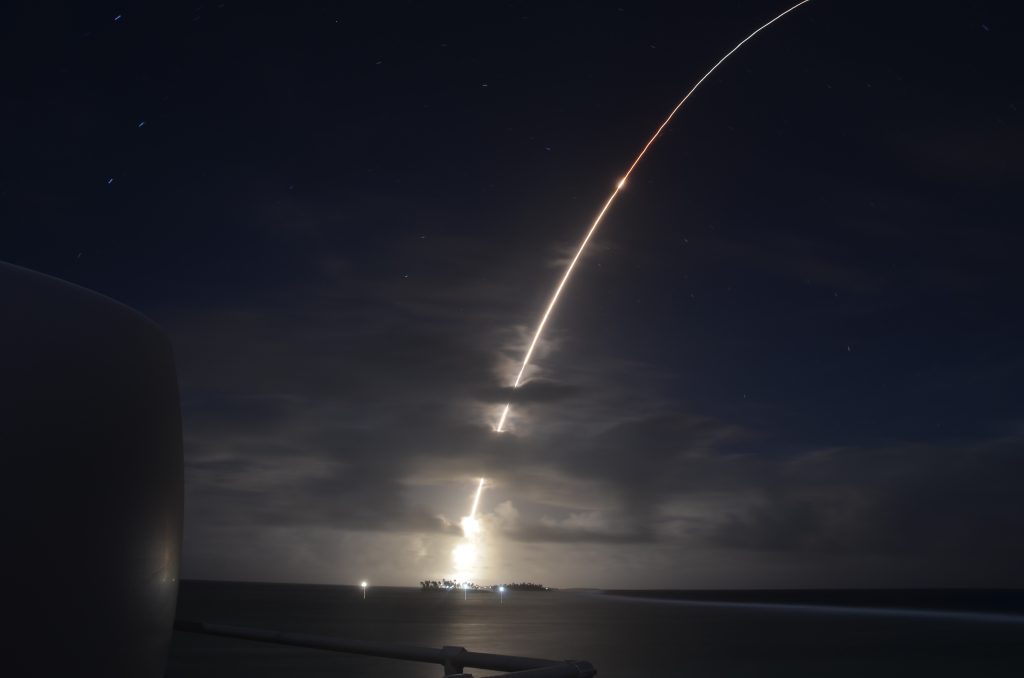
Conclusion and recommendations
Even though this issue brief’s recommended actions represent a significant break from the US homeland missile defense policy of the past, there is still significant continuation with the number-one policy priority of every post-Cold War presidency: deterring attacks on the US homeland. The United States currently relies almost exclusively on the threat of a retaliatory response to deter an attack on the homeland. The authors’ conclusion is simple: deterrence is likely to work best when the threat of imposing costs is combined with the threat of denying benefits. The United States cannot rely on its threats of retaliation to suffice against North Korea, Russia, and China—states that, to one degree or another, may perceive a US homeland that is vulnerable to missile attack as an opportunity for successful coercion. How then should the United States determine what it should defend among the many potential targets in the homeland?
One answer lies at the intersection of those capabilities required for the US military theory of victory and those capabilities the adversary most fears the United States can employ to disrupt its theory of military victory. As defense analyst Benson Adams stated late in the Cold War:
The value, vulnerability, and priority of targets in terms of their worth to the defender and his strategy must be carefully assessed, and only those targets essential to the success of the defender’s strategy or which can defeat the attacker’s strategy are defended. Damage is to be expected. But what rates of attrition can be expected to deter and if deterrence fails what active and passive measures will, under conditions of damage, allow a target to function or survive and the initiative to be resumed by the offensive? . . . If the attacker thinks he has a way to neutralize the deterrent, the deterrent no longer deters.41Benson D. Adams, “In Defense of the Homeland,” Proceedings 109 (1983): 50.
Rather than silver bullets, improved and expanded US homeland missile defenses are far more likely in the near future to prove to be useful counterweights to the “excessive reliance on offensive forces” for deterrence currently featured in the US strategic posture.42A phrase coined by Fred Hoffman in Hoffman, “Imperfect Strategies, Near-Perfect Defenses, and the SDI,” 219. Indeed, the question is not whether US homeland missile defense can replace offensive deterrence threats, but to what extent it can usefully contribute to deterrence by adding an element of denial to existing threats of punishment.
Therefore, this issue brief presents the following recommendations as potential means of improving deterrence and supporting the broader US national defense strategy. Detailed homeland missile defense architecture recommendations are beyond the scope of this paper and, in any case, would likely need to include classified information. Instead, these recommendations are the result of policy implications from the preceding discussion.
Recommendations
- Congress and the administration should reaffirm the US policy of staying ahead of rogue state ICBM threats to the homeland primarily via missile defenses, supplemented with “missile defeat” programs and nuclear deterrence. The United States must convince potential rogue adversaries, such as North Korea and Iran, that the employment of nuclear weapons against the US homeland would be fatal and futile.
- Continue plans to begin the fielding of twenty Next Generation Interceptors (with multiple kill vehicles) starting in 2028.
- Provide advance funding for an additional forty-four NGIs to replace existing ground-based interceptors.
- Determine, in cooperation with the intelligence community, the number of interceptors beyond the planned sixty-four, that may be required over the next ten years to pace the projected North Korean and potentially Iranian ICBM threats, while considering the role played by missile defeat forces.
- Provide an emergency/surge capability to defend the homeland against North Korean ICBMs with Aegis ballistic missile defense-equipped ships stationed in US ports and already assigned to all aerospace warning, control, and defense missions in North America, aka the Noble Eagle homeland defense mission of the North American Aerospace Defense Command (NORAD). This enhancement would require stationing existing ships capable of firing SM-3 IIA missiles at US naval ports during a crisis and increasing production of SM-3 IIA missiles from twelve to the current maximum of twenty-four per year.
- Expand the sea-launched emergency capability over the next few years by upgrading the SM-3 IIA missile and integrating it into the homeland missile defense command and control network.
- Examine the feasibility and cost of a land-based SM-3 IIA missile to provide an additional measure of protection against expanding North Korean and potential Iranian ICBM threats in the next decade.
- Revise US homeland missile defense policy to support a role for missile defense against coercive nuclear and nonnuclear strikes, regardless of the source.
- The definition of “coercive” should be based on an assessment of Chinese and Russian military theories of victory, both nuclear and conventional. Additionally, it should account for the capability of current and projected US homeland missile defense capabilities to intercept all types of Russian and Chinese missile-based threats.
- Determine what additional ground- and space-based capabilities and upgrades to existing and planned US homeland defenses interceptors are required to address the more sophisticated Chinese and Russian ICBM and hypersonic missile threats.
- Explore the technical capability of the SM-3 IIA and THAAD interceptors to provide preferential defenses for US nuclear forces and command and control in the late midcourse and terminal phases of flight.
- Explore new capabilities and technologies for missile defense, focused especially on directed energy and discrimination breakthroughs that might enable earlier and more confident identification of warheads versus countermeasures.
- Support the expansion of US homeland cruise missile defense capabilities, as advocated by the US Northern Command. Special emphasis should be placed on capabilities that enable domain awareness, lower the cost per intercept, and are difficult for adversaries to identify and locate.
About the authors

Senior Analyst, National Institute for Public Policy

Senior Fellow, Forward Defense, Scowcroft Center for Strategy and Security, Atlantic Council
Acknowledgments
The Scowcroft Center for Strategy and Security’s work on nuclear and strategic forces has been made possible by support from our partners, including Los Alamos National Laboratory, Northrop Grumman Corporation, the Norwegian Ministry of Defense, the United States Department of Defense, the United States Department of Energy, as well as general support to the Scowcroft Center. The partners are not responsible for the content of this report, and the Scowcroft Center maintains a strict intellectual independence policy.

Forward Defense, housed within the Scowcroft Center for Strategy and Security, generates ideas and connects stakeholders in the defense ecosystem to promote an enduring military advantage for the United States, its allies, and partners. Our work identifies the defense strategies, capabilities, and resources the United States needs to deter and, if necessary, prevail in future conflict.
Image: Courtesy of US Air Force.